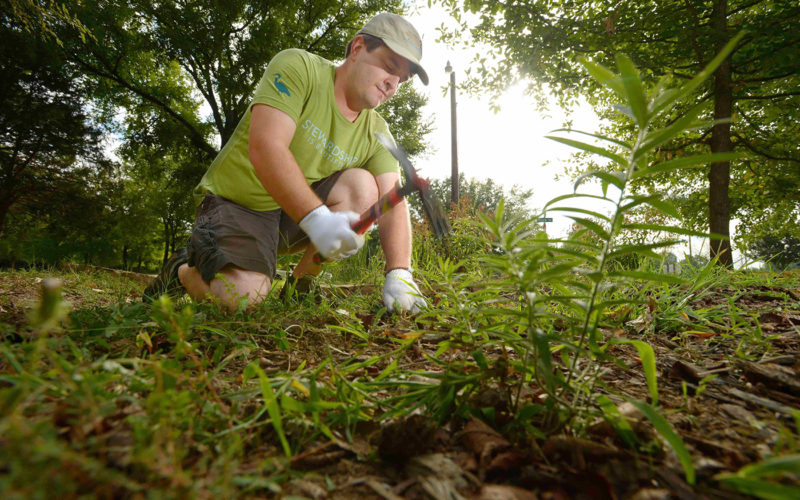Groundcovers are win-win for humans and nature
AMANDA BANCROFT
Making Ripples
Spring is on its way, bringing lots of rain and flowers. Maybe you want less mud and more flowers! If erosion is a concern, planting native groundcovers can be part of a good strategy. Of course, it’s best to address the causes of erosion, such as runoff from pavement or water moving too quickly because of poorly designed areas. Native plants retain the soil and are adapted to our native ecosystem, making them hardy and “good neighbors” to the species that evolved here together. Unlike non-native invasives, which can offer benefits to the environment as well as drawbacks, natives are a win-win for humans and nature alike.
First assess your site and consider usage needs and factors like the amount of sunlight it gets. Shade-loving plants will wither in full sun, and plants that require full sun may not bloom or do well in shady areas. Also remember that plants grow, so learn their ideal spacing and don’t overcrowd them. Select some native varieties that meet the goals of your site. These could be grasses, creeping vines or perennial flowers and shrubs. When first establishing plants, mulch around each one to retain the soil as the roots grow. Eventually, they’ll hold it in place and prevent erosion.
The Missouri Prairie Foundation lists these top 10 native ground cover plants: barren strawberry (Waldsteinia fragarioides), cedar sedge (Carex eburnea), crested iris (Iris cristata), James sedge (Carex jamesii), golden groundsel (Senecio aureus), prairie pussytoes (Antennaria neglecta), round-leaved groundsel (Senecio obovatus), spring daisy (Erigeron pulchellus), wild ginger (Asarum canadense), and woodland stonecrop (Sedum ternatum). They chose this selection because they’re “attractive, low maintenance and long-lived.”
For shady spots, you might enjoy wild ginger as a beautiful ground cover with unique leaves and dark maroon flowers. The leaves are kidney-shaped, perhaps as a warning that if we eat the plant, we could suffer kidney failure that could result in dialysis or a transplant. This is because it contains a carcinogen called aristolochic acid, according to the FDA. So plant the ginger, but don’t use it to spice up your cooking unless you’re OK with that risk.
Wild petunia (Ruellia humilis) loves the sun, and tolerates some shade. They grow about a foot tall and need to be 6 to 12 inches apart. Their lavender flowers are pretty, and the stems and leaves are actually hairy! The hairs make them adaptable to dry conditions. They’re also deer and rabbit resistant. Another purplish ground cover is the purple poppy mallow (Callirhoe involucrate). It’s fun to say its name, and it’s a very attractive plant. It needs full sun. It’s a host plant for the gray hairstreak butterfly, too.
White River Nursery suggests sun drops (Oenothera fruticosa) — also called primrose — as a native option that prevents erosion. As their name suggests, the flowers are sunny yellow, and they love the sun. Hummingbirds and bees enjoy them. The cost is $9.50 for a 1-gallon plant. Wild Streak Native Plants also offers a great selection of plants that fit this scenario. They recommend button bush (Cephalanthus occidentalis) as a shrub example that holds soil well and attracts pollinators. Plus, “it has super cute flowers!” Check them out at the upcoming Fayetteville Farmers’ Market starting in April when they will have starts available. With some TLC, eroded areas can better withstand spring rains and make the landscape more attractive. Native plantings can offer these services while fitting into our local ecosystem the way nature intended.
Amanda Bancroft is a writer, artist, and naturalist living in an off-grid tiny house on Kessler Mountain. She and her husband Ryan blog about their adventures and offer tips to those wanting to make a difference at www.RipplesBlog.org.










